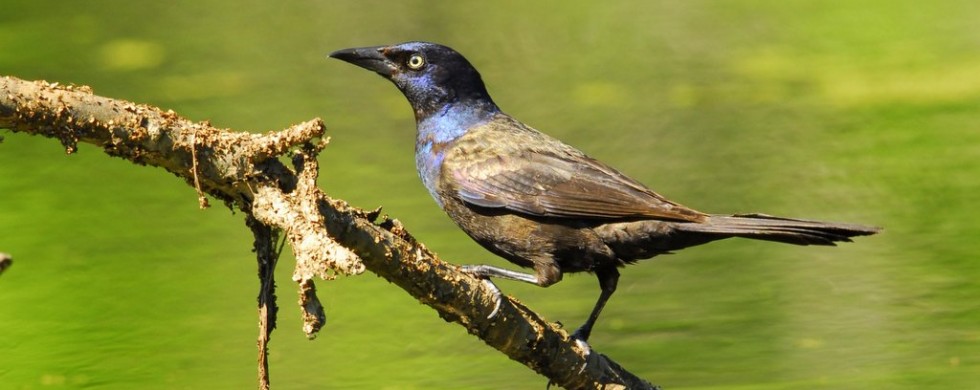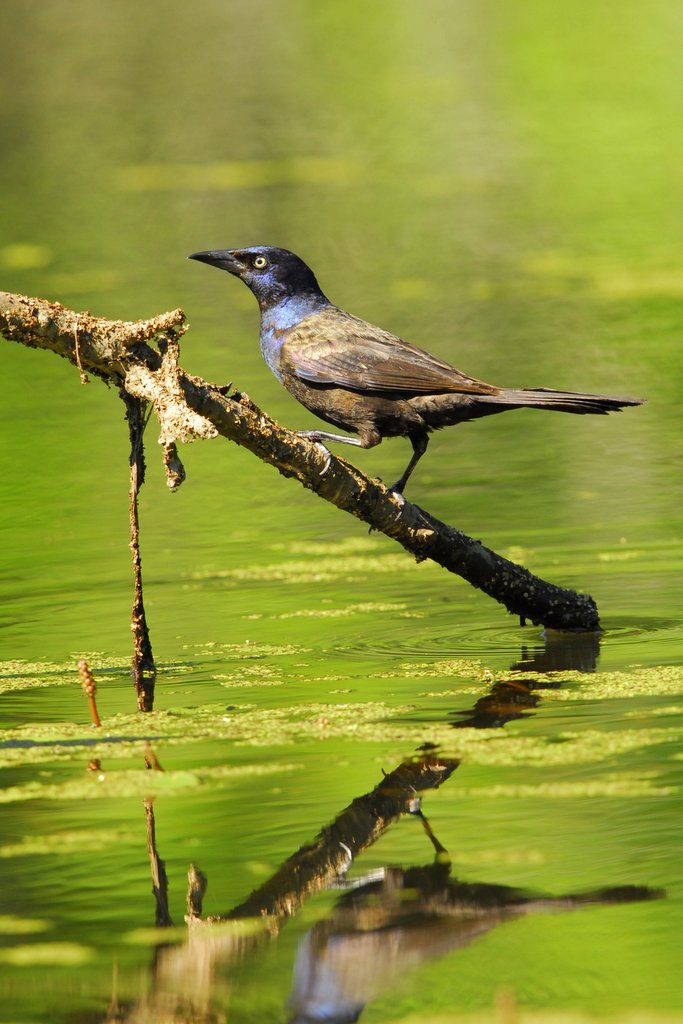
30
2013Rowdy Plague…
Shot of the Month – May 2013
Ever been at your favorite watering hole or dining establishment when a boisterous crowd rolls in and takes over the place? They talk too loudly. They, generally, make too much noise. You get jostled, perhaps spilling your drink, as they tumble into your space with their horseplay. They ravage through the snack bowls leaving you soggy and hungry.
In Bird World (great rides but I always leave feeling a bit peckish…) a similar scene often plays out at the local bird feeder with a group of Common Grackles, like the one shown here, playing the role of roughneck. Grackles will often intimidate other birds at feeders and push them aside to eat first.
Common Grackles are large, noisy, and gregarious birds that often hang out together in large numbers. Their song is particularly harsh and when multiplied by thousands it can get to rock concert levels of cacophony.
Common Grackles are omnivores and very resourceful foragers and can eat insects, minnows, frogs, eggs, berries, small birds, and mice, and well, it would be easier to list what they don’t eat. Grackles sometimes follow plows to catch invertebrates and mice, wade into water to catch small fish, pick leeches off the legs of turtles, steal worms from the American Robin, or hang out at outdoor eating areas and feed on food dropped by humans. That partial list gives you a sense of the diverse range of strategies these crafty birds deploy to find food. During the summer up to one-quarter of a grackle’s diet may be animals. (source)
That being said, Grackles are especially fond of seeds and grains and are considered the number one threat to corn crops in the US!? (I guess we need more “Scaregrackles” and fewer Scarecrows.) They forage together in large flocks and typically descend on corn fields in large numbers causing millions of dollars of damage each year. Perhaps an irate farmer came up with the common name for a group of grackles: a plague.
Unlike many birds, Common Grackles are very successful in and near human landscapes due to their opportunistic and adaptable nature. Grackles prefer open and semi-open areas across North America east of the Rocky Mountains. The range of these birds was more “easterly’ but expanded west as settlers cleared the forests.
Despite their uncouth nature, the Common Grackle can be quite the sharp dresser. Catch the light right and their heads display a stunning green or blue iridescence, while their body plumage shimmers with a bronze hue.
The Common Grackle, the wily ruffian of the bird world.

